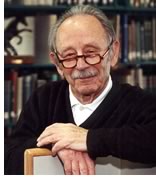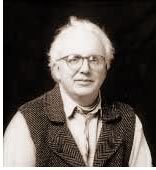
Educators and mentors mourned this week

Associate Editor
George Hasslein, FAIA, died in San Luis Obispo, Calif., after suffering a heart attack. He was 83.
 Hasslein
is being remembered as a popular mentor to thousands of students and college
alumni at the California Polytechnic State University San Luis Obispo
College of Architecture and Environmental Design. His association with
the school began in 1950, when he became an assistant architecture professor.
He was named head of the new architectural engineering department a year
later and went on to become the founding dean of the university's School
of Architecture and Environmental Design in 1968, which he built into
a college that currently offers five bachelor's degrees and two master's
degrees. He returned to teaching in 1983 and remained a professor until
his death last month.
Hasslein
is being remembered as a popular mentor to thousands of students and college
alumni at the California Polytechnic State University San Luis Obispo
College of Architecture and Environmental Design. His association with
the school began in 1950, when he became an assistant architecture professor.
He was named head of the new architectural engineering department a year
later and went on to become the founding dean of the university's School
of Architecture and Environmental Design in 1968, which he built into
a college that currently offers five bachelor's degrees and two master's
degrees. He returned to teaching in 1983 and remained a professor until
his death last month.
"I learned much from George when I taught here in the '60s," said Martin Harms, AIA, the college's present dean. "George's vision has made a lasting impact on the college and its more than 10,000 grads over the past 51 years." Indeed, that influence was celebrated by Hasslein's former students in 1984 when the alumni threw him a party and gave him a 1981 bronze Mazda RX-7. The license plate read, "No. 1 Dean."
Hasslein earned a number of awards, including the 1977 California Council of the American Institute of Architects Award for Excellence in Education and the 1982 Los Angeles Chamber of Commerce's Construction Industry Achievement Award.
Hasslein received his BArch from the University of Southern California in 1945. He was inducted into the College of Fellows in 1964. He is survived by a son and a daughter. A memorial service was scheduled for 3 p.m. September 8 in the Performing Arts Center complex on the Cal Poly campus. The college is also planning a special alumni gathering in Hasslein's honor during homecoming weekend, November 9–11. Memorial contributions may be sent to the College of Architecture and Environmental Design Foundation, in care of the college, to establish an endowed teaching position in his name.
Steven Izenour, AIA, Philadelphia architect
Steven Izenour, another beloved mentor and practitioner died of a heart attack August 21 while on vacation with his family in Vermont. He was 61.
 The
Philadelphia architect, writer, thinker, and teacher was a principal at
Venturi, Scott Brown and Associates (VSBA) since 1969. He coauthored,
with Robert Venturi and Denise Scott Brown, Learning
from Las Vegas (MIT Press, 1972), which some consider to be one
of the most important books on architecture in the 20th century. He earned
a reputation for incorporating popular American culture into his award-winning
designs. In 1982, the design for his parent's house on Long Island Sound
was exhibited at the Centre Georges Pompidou in Paris and won a national
AIA Honor Award. His monumental scheme for lighting the Benjamin Franklin
Bridge in Philadelphia received national recognition during the celebration
of the Constitution's bicentennial. He also authored numerous articles
and was a noted lecturer and influential teacher at schools and universities
around the world. He is also remembered for his work with younger architects.
The
Philadelphia architect, writer, thinker, and teacher was a principal at
Venturi, Scott Brown and Associates (VSBA) since 1969. He coauthored,
with Robert Venturi and Denise Scott Brown, Learning
from Las Vegas (MIT Press, 1972), which some consider to be one
of the most important books on architecture in the 20th century. He earned
a reputation for incorporating popular American culture into his award-winning
designs. In 1982, the design for his parent's house on Long Island Sound
was exhibited at the Centre Georges Pompidou in Paris and won a national
AIA Honor Award. His monumental scheme for lighting the Benjamin Franklin
Bridge in Philadelphia received national recognition during the celebration
of the Constitution's bicentennial. He also authored numerous articles
and was a noted lecturer and influential teacher at schools and universities
around the world. He is also remembered for his work with younger architects.
Izenour attended Swarthmore College and then the architecture program at the University of Pennsylvania, from which he graduated in 1965. He received his MArch from Yale University in 1965. Izenour is survived by his wife, parents, and children. Contributions may be made to The Wagner Free Institute of Science, 1700 West Montgomery Ave., Philadelphia, PA 19121, 215-763-6529, or to The Tenney Memorial Library, P.O. Box 85, Newbury, Vt., 05051, 802-866-5539.
Copyright 2001 The American Institute of Architects. All rights reserved.
![]()
|
|
|